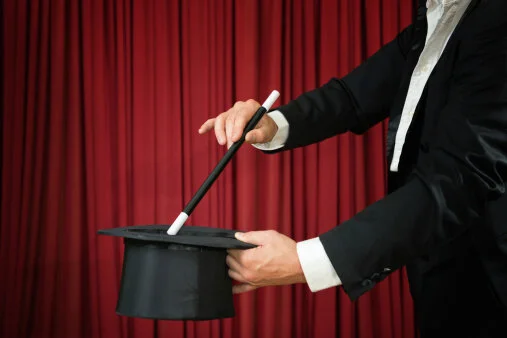World Famous Magicians
In the world of theatrical magic, misdirection can be described as a form of deception that is able to draw attention of the audience to one item to distract them from the other. Controlling attention of the audience is the aim of all performances, and the most important need of any magic act. It doesn’t matter if the magic is an “pocket trick” variety or an extensive stage production, misdirection is the central element. The term refers to either the effect (the observer’s focus on the unimportant object) or the sleight-of-hands or patter (the magician’s voice) that causes it.
It is difficult to say who coined the phrase, however an early reference to misdirection appears in the writings of a renowned writer and magician named Nevil Maskelyne. it consists of misleading the spectator’s senses, in order to screen from being aware of certain information in which confidentiality is essential. At the same time, the magician, artist and author Harlan Tarbell noted, Nearly everything about illusion relies on the art of misdirection.
Magicians who have researched and developed techniques of misdirection are Leipzig, Max Malini, Derren Brown, Tommy Wonder, Juan Tamariz, Slydini, and Dai Vernon.
Henry Hay describes the chief act of conjuring as manipulation of interest.
Many magicians divert attention of the audience in two primary ways. One leads the audience to glance away for a brief moment, so that they don’t detect some act or gesture. The other approach re-frames the perception of the audience, lulling the audience into believing that some other factor has much to do with the accomplishment of the feat but it actually has no bearing on the effect at all. Fitzkee says that the most effective magic is in the skill he exhibits in influencing the spectators mind. In addition, sometimes, props like the magic wand can aid in misdirection.

In the absence of it, even the most proficient sleight-of-hand or mechanical prop will fail to produce an illusion of strong magic. In point of fact, misdirection is the wellspring of nearly all powerful magic.
Misdirection uses the limits of human brains to present a false image and memory. The mind of a typical spectator can only focus on only one thing at a given time. The magician makes use of this technique to alter the viewers’ thoughts or perceptions of sensory input, leading them to false conclusions.
Many magicians have debated over the usage of the term, misdirection, creating many discussions about the meaning of it and how it functions. Proficient magician Jon Finch made a distinction in misdirection from direction. One being a negative termas opposed to the other, positive. Ultimately, he equates the two as the same thing. If a performer, through some means, has directed the thoughts of his audience to conclude that he did something that he’s not done, he has wrongly led them to believe thisand, consequently, misdirection.
Tommy Wonder has pointed that it’s more efficient, from a magician’s point of viewto focus on the goal of directing the audience’s attention. He writes that misdirection implies wrong direction. It implies that attention is directed away towards something. Through constant use of this phrase, it eventually becomes so ingrained in our minds that we may begin to think that misdirection is directing our attention away from rather than toward something.

Slydini explained that if a magician believes it, the audience will believe in it, and magic is something they don’t observe. It is true that people believe what the magician does and follow the magician. read more about misdirection